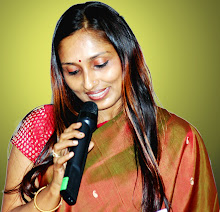Few days back Mr. Rahul Gandhi commented that if India wants to progress than first we have to solve the problem of Gujarat. What problem Mr. Rahul Gandhi? That Gujarat is the only state and Shri Modiji is the only chief minister that is achieving real progress? please read the following.
A nationwide opinion poll
India’s best governed states
With exclusive interviews of Narendra Modi Gujarat, Sheila Dixit Delhi, Omar Abdullah Jammu & Kashmir, Bhupinder Singh Hooda Haryana, Raman Singh Chattisgarh, Nitish Kumar Bihar, Ramesh Pokhriyal Uttarakhand, Prem Kumar Dhumal Himachal Pradesh, B S Yeddyurappa Karnataka
The Sunday Indian and C-Voter nationwide survey of India’s best governed states has seen Gujarat emerge on top among the big states. Orissa and Bihar have tied to fill the rest of the podium. Among the small states, Haryana has run away with the top spot, followed by Chattisgarh and Delhi. In terms of perception outside one’s own state, Narendra Modi is the most popular chief minister, Sheila Dikshit and Nitish Kumar coming in at distant second and third positions respectively.
One thing has come out crystal clear from the responses. People have given primacy to development and governance in rating the state governments and chief ministers. The trend can be taken for yet another vindication of the fact that the Indian democracy may finally be going beyond the ambits of identity politics. Whether an incumbent state government is delivering on the fronts of healthcare, education, sanitation, irrigation, transport and employment generation, whether it is able to restore law and order, whether it is cracking down on corruption – these benchmarks are being considered more important by Indians than appeals to their religious, caste or lingual identity.
However, the survey held among 20,000 respondents (people eligible to vote) has a lesson in store even for the toppers. None of the chief ministers have got a net approval rating of over 40 per cent. This basically means there is urgent need to do more work and that there is no room for complacency.
Though their area of work is limited to the states they represent, the survey made clear that the popularity of some chief ministers cut across state borders. Narendra Modi, Sheila Dikshit and Nitish Kumar are the typical examples. Out of these three, Nitish Kumar deserves special mention as this is his first term in arguably the most difficult state of the country. Modi and Dikshit have had the advantage of prior experience though that does not take the shine of their achievements.
Modi has been voted the best in all categories. Be it electricity, roads, healthcare, primary education, transport, communications, the situation in Gujarat seems only to be improving. But Modi’s road to victory has a few significant potholes. Only 6 per cent of voters in Gujarat are satisfied with the government’s action to control corruption in civil services. Gujarat’s scores in the parameters of law and order and social and communal harmony is also abysmal.
Raman Singh’s popularity is noteworthy, considering he rules a state which is small and plagued by Maoist violence. People seem to be largely satisfied with his government's work. His state takes the second position in all the categories among the five best small states.
Equally remarkable is Orissa's Naveen Patnaik who has garnered the second position in terms of net satisfaction ratings with the chief minister but his state is in the fifth position in terms of governance among five large states and lowest in the overall quality of life.
Methodology
This is one of the most exhaustive and comprehensive surveys done to rate the performance of state governments and chief ministers by their own voters. In all, 26,432 citizens and voters across were selected through random sampling. The number of voters selected for each state was proportional to the number of Lok Sabha and Assembly seats of each state, Rural and urban voters were selected on the basis of the percentage of voters residing in rural and urban areas. For example, the sample from Gujarat has proportionately more urban voters than the sample from Orissa. Adequate attention was given to ensuring representations from all socio-economic levels, caste and religion. Each ‘voter’ was given a questionnaire to fill up. Team C-Voter identified 15 parameters on which the citizen voter was required to rate the government and the chief minister. The answer options were standard-ranging from much improved to remains the same to far worse. Positive responses on each parameter were aggregated and a final average performance measurement was done accordingly. It is important to note here that the ‘performance’ of the state government and chief minister is based entirely on the perception of the individual voter whose expectations differ from state to state. Hence, Bihar scores over Karnataka in terms of voter perceptions for the parameter public transport. One interesting and exclusive aspect of the survey is a question asked to voters to rate the best Chief Minister outside their own state. It has thrown up interesting results! This is an ongoing survey and TSI, along with Team C-Voter will be conducting them on a quarterly basis and exclusively share the results with readers.
by Priyanka Rai
Subscribe to:
Post Comments (Atom)

No comments:
Post a Comment